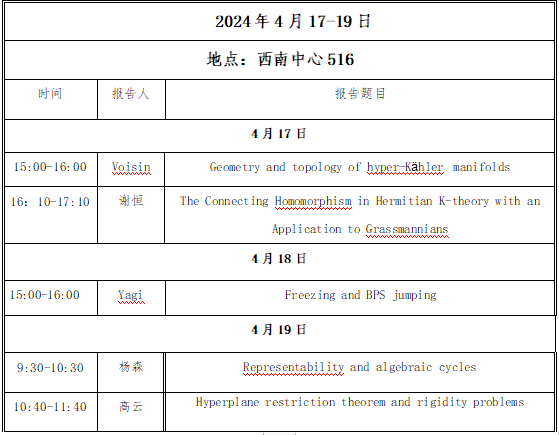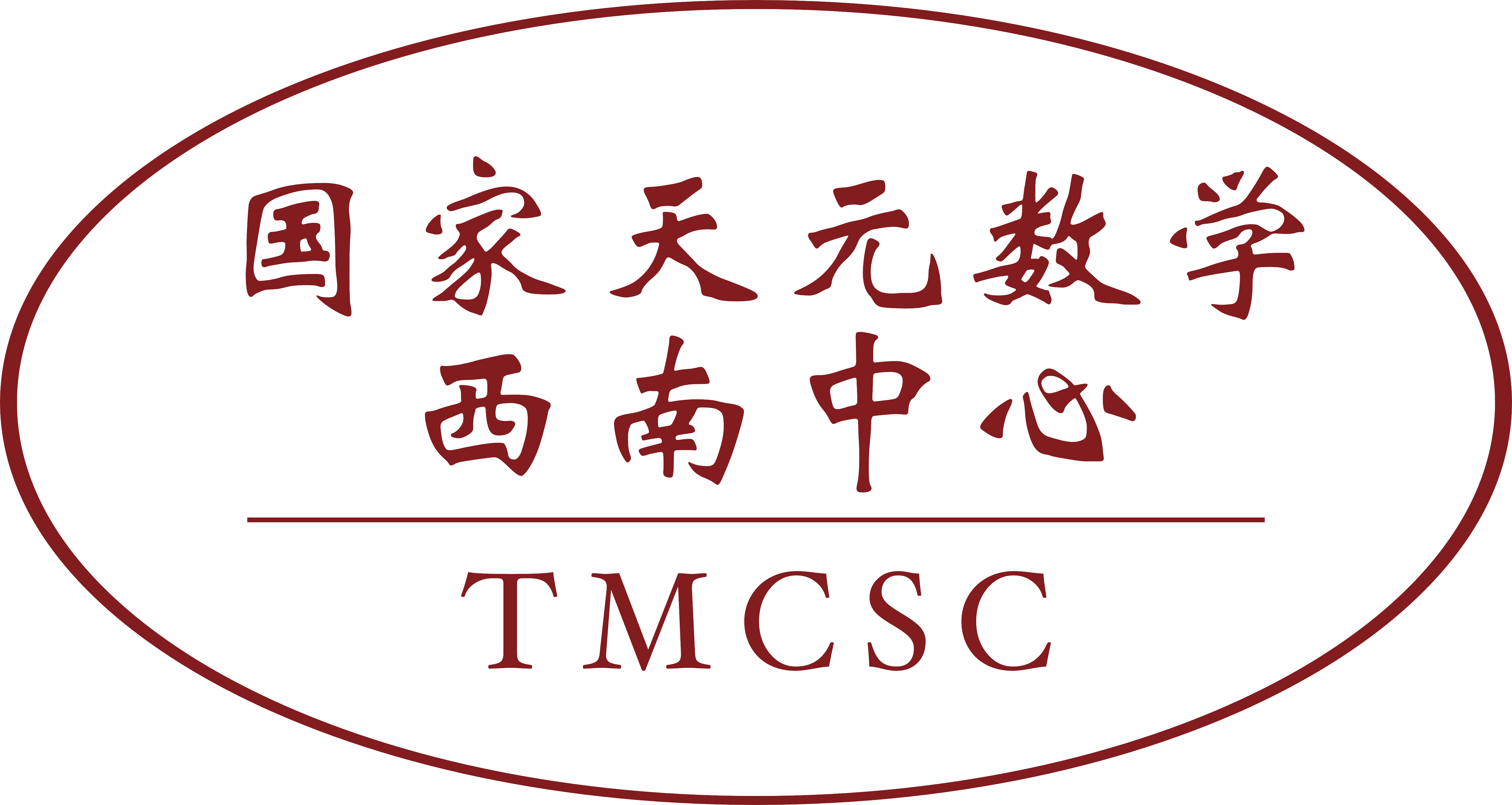Workshop on Geometry
会议时间:2024年4月17日-19日
会议地点:西南中心516报告厅

报告题目:Geometry and topology of hyper-Kähler manifolds
报告专家:Claire Voisin
报告摘要:Algebraic geometry deals with algebraic objects like polynomials. Riemannian geometry instead studies metric and curvature properties of manifolds. An important tool in Riemannian geometry is the parallel transport and the notion of holonomy. Although these two fields are a priori disjoint, algebraic geometry over the complex numbers is a rich source of construction of Riemannian manifolds with special holonomy, thanks to the existence of Kähler-Einstein metrics. I will restrict in this talk to hyper-Kähler geometry and describe its main features.
报告题目:The Connecting Homomorphism in Hermitian K-theory with an Application to Grassmannians
报告专家:谢恒(中山大学)
报告摘要:Higher algebraic K-theory was introduced by Daniel Quillen in 1972. In his work, Quillen constructed a localization sequence, a long exact sequence that serves as a powerful computational tool in higher algebraic K-theory. However, the connecting morphism (also known as the boundary map) in the localization sequence is too abstract, and Quillen remarked that his proof unfortunately does not shed much light on the nature of the boundary map. An intrinsic description of the connecting morphism remains a mystery to this day. Hermitian K-theory, which generalizes Quillen’s higher K-theory, was introduced by Bass and Karoubi in 1973. Hermitian K-theory also possesses a localization sequence and a connecting homomorphism. Recently, we have developed pushforward and pullback maps in Hermitian K-theory, and we have proven the base change, projection, and excess intersection formulas. These tools allow us to describe the connecting homomorphism in the localization sequence of Hermitian K-theory geometrically. As an application, we compute the Hermitian K-theory of Grassmannians. The computation leads to a special class of Young diagrams that we call buffalo-check Young diagrams. This is joint work with Tao Huang.
报告题目:Freezing and BPS jumping
报告专家:Futoshi Yagi(西南交通大学)
报告摘要:Nekrasov partition function is an important ingredient to understand supersymmetric gauge theory, which also has interesting geometric interpretation. In this talk, we discuss non-trivial identities among Nekrasov partition functions for 5 dimensional N=1 supersymmetric gauge theories. These identities are motivated by the relation between O7^+ plane and O7^- plane, which we call "freezing". Through this study, we also find novel phenomenon called "BPS jumping", which is discontinuity of the Nekrasov partition function and interpreted as the jump of BPS spectra. We propose two types of gauge theories whose BPS spectra jump. One is the SU(2N+8) gauge theory with a symmetric hypermultiplet converted to the SU(2N) gauge theory with an antisymmetric hypermultiplet. The other is pure SO(2N+8) gauge theory jumping to pure Sp(N) gauge theory. This talk is based on the collaboration with Sung-Soo Kim, Li Xiaobin, and Satoshi Nawata.
报告题目:Representability and algebraic cycles
报告专家:杨森 (滁州学院)
报告摘要:For a smooth projective surface, Bloch investigated representability of the Chow group by computing its formal completion functor. This motivated him to make the well-known conjecture which predicted that, for (over complex number field) with trivial geometric genus, the Albanese map is an isomorphism. This conjecture had been intensively studied by experts, including Bloch,Kas,Lieberman, Wenchuan Hu (胡文传), Pedrini, Weibel, Voisin. Green and Griffiths pioneered to study the first order deformations of zero cycles on a surface and pointed out that it was a nonclassical phenomenon. We connect their idea with the work of Bloch by studying representability of algebraic cycles. The main tools used here are the classical Bloch-Ogus theorem and Schlessinger’s theory on functors of Artin rings.
报告题目:Hyperplane restriction theorem and rigidity problems
报告专家:报告人:高云(上海交通大学)
报告摘要:We will introduce a hyperplane restriction theorem for the local holomorphic mappings between projective spaces, which gives us a formula to estimate the dimension of the linear span of image from the dimension of image of a general linear subspace. In addition, we will introduce a new coordinate-free approach to study the Cauchy-Riemann maps between the real hyperquadrics and type I bounded symmetric domains in the complex projective spaces. Combining these methods, we can generalize a number of well-known rigidity theorems with much simpler arguments. It is a partly joint work with Sui-Chung Ng.
